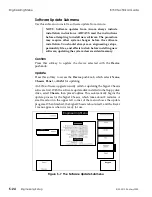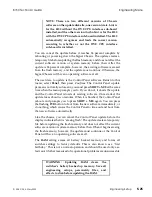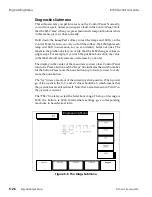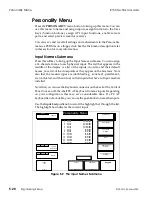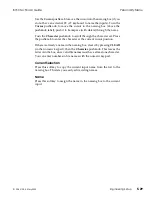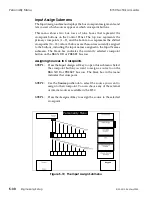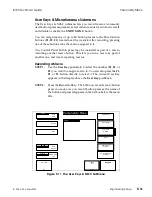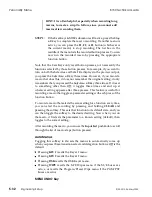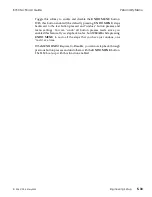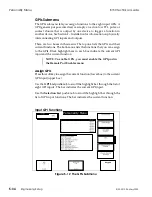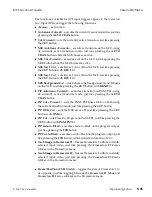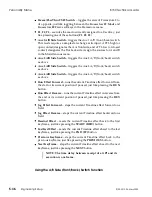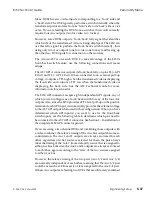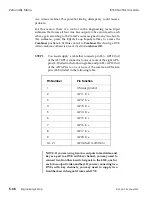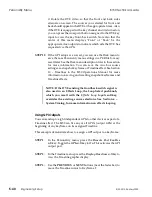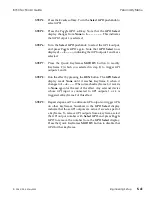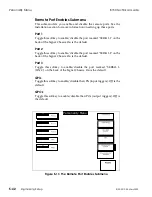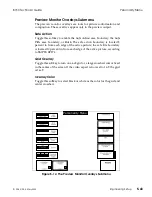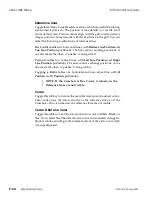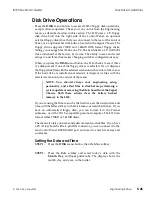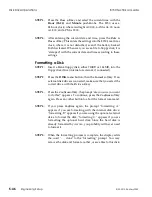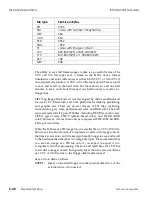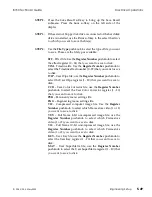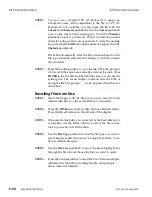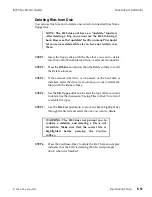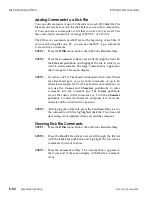
Many DVEs have two video inputs, corresponding to a "front" side and
a "back" side. The DVE typically performs a switch internally when the
transformed picture rotates from its "front" side to its "back" side or vice
versa. If you are feeding the DVE from a switcher, this would normally
require four Aux outputs (two for video, two for key).
However, some DVEs output a "front/back" tally signal that identifies
which side of the transformed video is being displayed. The 8150 can
use this tally signal to perform the front/back switch internally, thus
using only two Aux outputs (one for video, one for key) and freeing up
the other two DVE inputs for connection to other sources.
The Accom A57 is one such DVE. To take advantage of the 8150’s
front/back switch feature, use the following connections and menu
setups.
The A57 GPI A connector outputs its front/back tally on pins 23 (+ GPI
2 Out) and 22 (- GPI 2 Out). When connected to an external pull-up
voltage, it outputs a TTL high when the transformed video is displaying
the front side, and outputs a TTL low when the transformed video is
displaying the back side. See the A57 Technical Guide for more
information on this connector.
The 8150 GPI connector accepts eight independent GPI inputs, any of
which you can configure as a front/back switch for any of the four Aux
outputs. Also, since the 8150 provides a TTL level pull-up on the positive
terminal of each GPI input, it automatically provides the external voltage
to the A57 GPI output when used in this configuration. When you have
determined which GPI input(s) you want to use for the front/back
switch inputs, see the following table to determine which pins need to
be connected to the A57 GPI A connector. See Section 2 – Installation for
the complete 8150 GPI connector pinout.
If you are using a two channel DVE and combining those outputs with
a video combiner, the relative timing of the Aux bus outputs becomes a
consideration. The Aux 1 and 2 outputs are always zero timed to each
other, regardless of what source is selected for them; the pair always
takes the timing of the "later" (more delayed) source that is assigned to
either Aux bus. Likewise, the Aux 3 and 4 outputs are always zero timed
to each other, again according to the "later" of the two sources assigned
to either Aux bus.
However, the relative timing of the two pairs (Aux 1/2 and Aux 3/4)
are normally independent of each other, meaning that the Aux 1/2 pair
could be as much as 32 lines early or late compared to the Aux 3/4 pair.
If these Aux outputs are feeding two DVEs that are ultimately combined
8150 Technical Guide
Personality Menu
9100-0212-04 - May 2000
Engineering Setup
5-37
Содержание ASWR8150
Страница 12: ...Table of Contents 8150 Technical Guide X Contents 9100 0212 04 May 2000...
Страница 39: ......
Страница 80: ...Control Panel Connector Detail 8150 Technical Guide 2 40 Installation 9100 0212 04 May 2000...
Страница 109: ...Option Installation 8150 Technical Guide 3 30 Option Installation 9100 0212 04 May 2000...
Страница 236: ...8150 Partial Parts List 8150 Technical Guide A 6 Appendix 9100 0212 04 May 2000...


